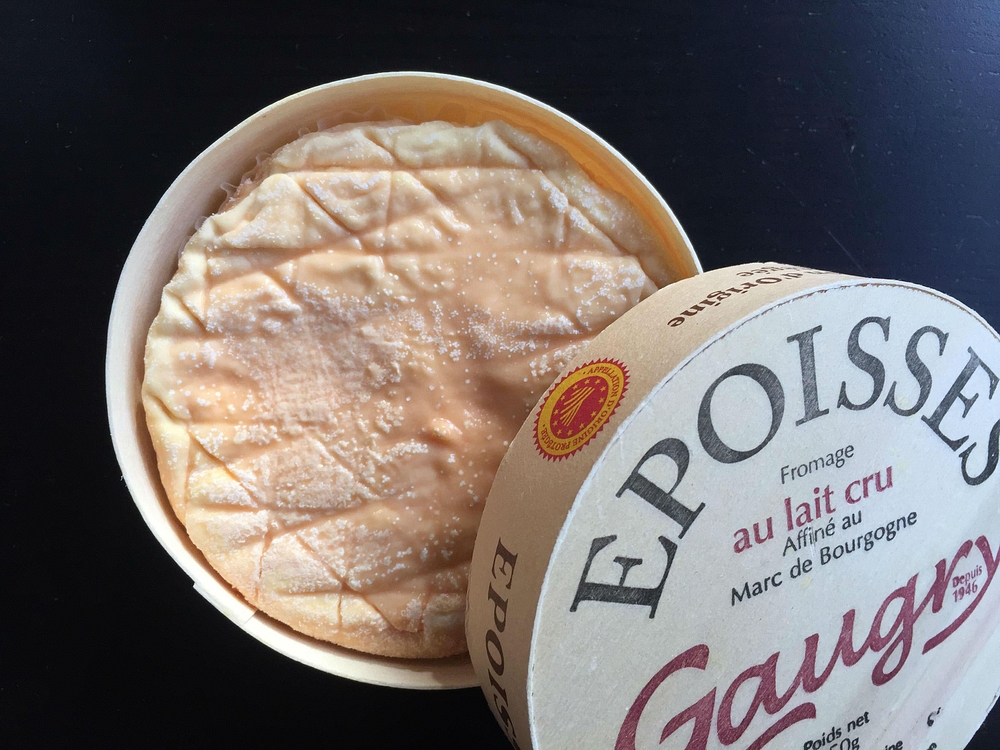Époisses de Bourgogne - commonly known simply as Époisses - is made in the village that lends it its name, in the Cote d'Or department of Eastern France. Now that the geography is out of the way, the second most important thing to know is this. Époisses stinks. But in the best possible way, of course!
Don't be fooled by the cute round shape and dinky proportions of this cows-milk cheese, Époisses has been gleefully wrinkling noses for hundreds of years, ever since the Cistercian monks at L'Abbaye de Cîteaux first invented it at the beginning of the 16th century.
Legend has it that when the community of monks left the area, the recipe was handed down to local farmers, who developed and perfected it over the following centuries. Their diligence obviously paid off, given that the famous gourmand Brillat-Savarin (a man so renowned for his epicurean excess that a cheese was named in his honour) declared Époisses to be "the king of all cheeses."
At the Vienna Congress of 1815, no fewer than 49 European cheeses were rated in a very cheese-loving competition. Époisses took second place after the mighty Brie, so Brillat-Savarin was not alone in his glowing opinion.

By 1900, there were over 300 farms producing Époisses, but as with many cheeses, production stalled during the course of the two World Wars. Époisses might have disappeared completely if a duo of industrious farmers, Robert and Simone Berthaut, hadn't dedicated themselves to reviving local know-how in 1956 - starting in their own basement. Today, their son Jean continues their noble endeavour and the Berthaut name is now synonymous with Époisses. In 1991, their work was rewarded when Époisses was designated Appellation Origine Controllée or AOC status, meaning there are tight conditions that control its production - if the rules are broken, the resulting cheese simply is not an Époisses.
What kind of rules? Well. Époisses must be made from unpasteurized cow's milk for a start - no other white stuff will do. That milk can't just come from any old cow though, it must come from cows of the Brown Swiss, French Simmental or Montbéliarde persuasion. Of course, those cows have to be fed locally, too - 85% of their diet has to be sourced locally to the area of cheese production. Cheese curds can never be cut - no sir - they must be hand-broken and treated gently, like the precious cheesy innards they are. With so much care and control going into its creation, one can only imagine that this punchy little cheese would be quite the diva.
So how is it made? Why I'm glad you asked. Firstly, whole milk is heated to around 86°F / 30°C. Coagulation then sets in and lasts for around 16 hours - in fact you won't be surprised to hear that The Rules state it has to be at least 16 hours - after which the curds are drained while the whey runs off. The cheeses then rest in moulds for 48 hours and are then removed to drying racks after being salted. Then comes the washing. Around three times a week, the little cheeses are washed with a mixture of water and marc de Bourgogne, a local pomace brandy made from the skins leftover after wine-making. For the next six weeks, the cheeses start to develop their distinctive orange-red rind as they age.

©LaCuisineParis
Époisses is a very soft cheese, which explains why it is usually found in little wooden boxes that help protect it. Now, you have been forewarned that Époisses is a pungent little cheese monster, but like all washed-rind cheeses its bark is far worse than its bite. The rind may have you wondering what you're getting yourself into, but once you get to that soft creamy interior you'll be rewarded with gooey mild loveliness, perfect for spreading on crackers or slathering on baguette. So as with so many things in life, when it comes to Époisses, you can't judge a book by its (stinking) cover.
With Époisses being such a small-yet-mighty kind of cheese with a whole lot to say for itself, it pairs best with drinks that can hold their own. That's why it's often paired with strong dark ales, full-bodied Burgundys, bold Chardonnays or a decadent Châteauneuf-du-Pape - for those with the urge to splurge.

